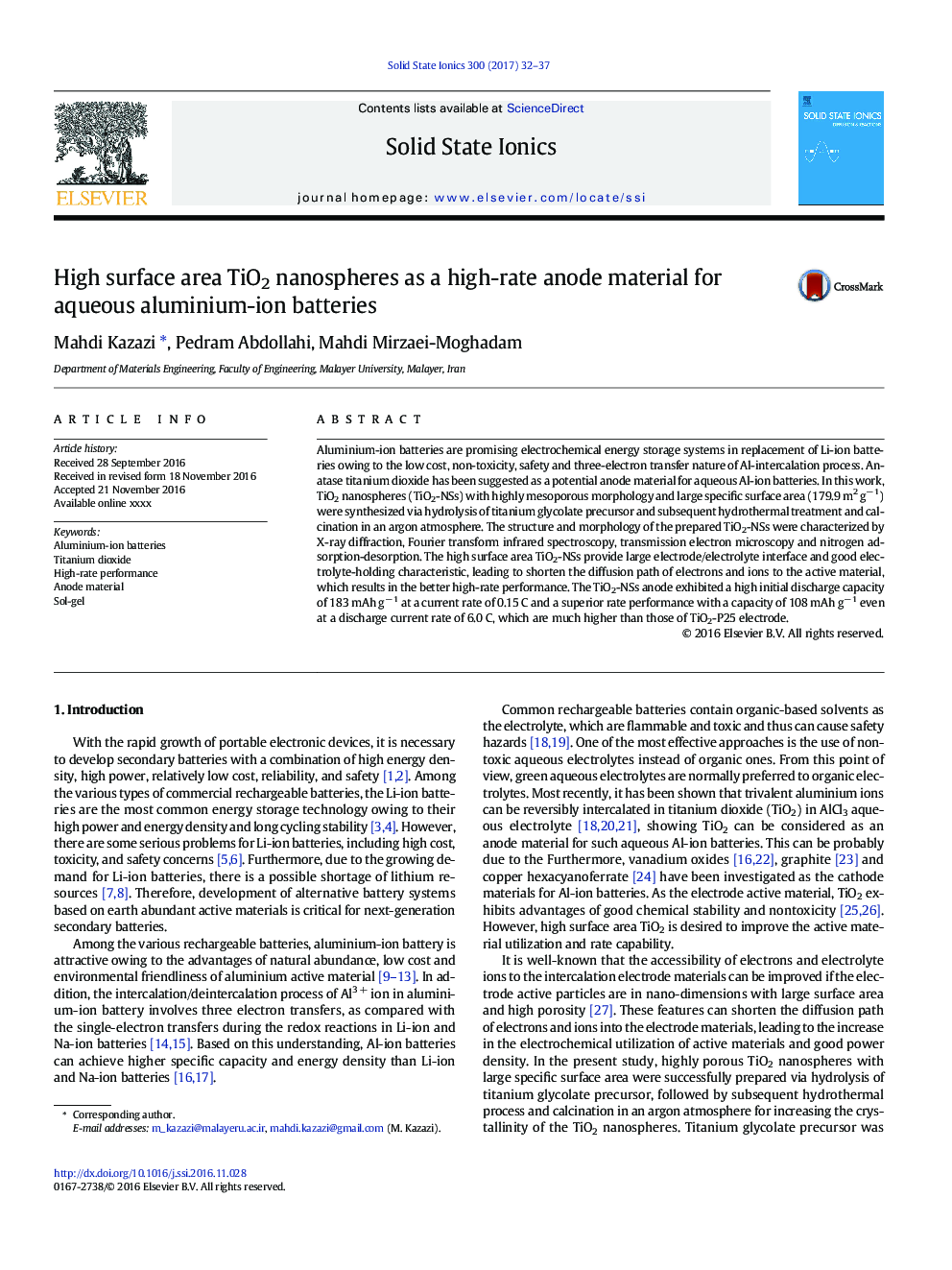| Article ID | Journal | Published Year | Pages | File Type |
|---|---|---|---|---|
| 5150467 | Solid State Ionics | 2017 | 6 Pages |
Abstract
Aluminium-ion batteries are promising electrochemical energy storage systems in replacement of Li-ion batteries owing to the low cost, non-toxicity, safety and three-electron transfer nature of Al-intercalation process. Anatase titanium dioxide has been suggested as a potential anode material for aqueous Al-ion batteries. In this work, TiO2 nanospheres (TiO2-NSs) with highly mesoporous morphology and large specific surface area (179.9 m2 gâ 1) were synthesized via hydrolysis of titanium glycolate precursor and subsequent hydrothermal treatment and calcination in an argon atmosphere. The structure and morphology of the prepared TiO2-NSs were characterized by X-ray diffraction, Fourier transform infrared spectroscopy, transmission electron microscopy and nitrogen adsorption-desorption. The high surface area TiO2-NSs provide large electrode/electrolyte interface and good electrolyte-holding characteristic, leading to shorten the diffusion path of electrons and ions to the active material, which results in the better high-rate performance. The TiO2-NSs anode exhibited a high initial discharge capacity of 183 mAh gâ 1 at a current rate of 0.15 C and a superior rate performance with a capacity of 108 mAh gâ 1 even at a discharge current rate of 6.0 C, which are much higher than those of TiO2-P25 electrode.
Related Topics
Physical Sciences and Engineering
Chemistry
Electrochemistry
Authors
Mahdi Kazazi, Pedram Abdollahi, Mahdi Mirzaei-Moghadam,
